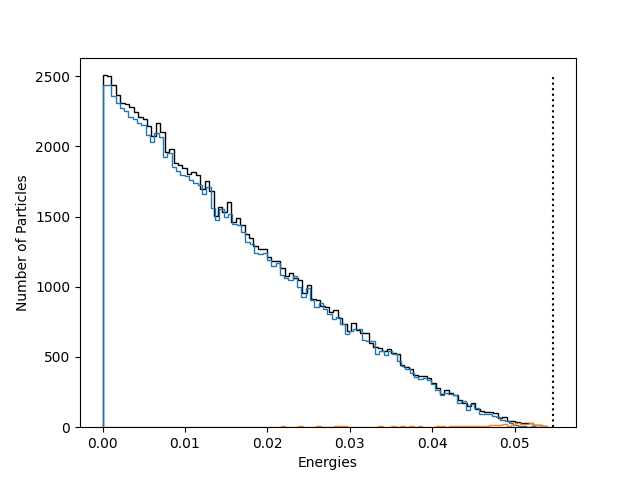Nicole Drakos
Research Blog
Welcome to my Research Blog.
This is mostly meant to document what I am working on for myself, and to communicate with my colleagues. It is likely filled with errors!
This project is maintained by ndrakos
Double Alpha Profile Stability
As I said in the last post, I will set up a “Double Alpha” profile. Here I am checking the stability of the IC code.
Parameters
I changed the alpha parameters slightly from the last post.
- \(\alpha_{dm}\) = 0
- \(\alpha_{stars}\) = 1
- \(r_{s,dm}/r_{s,stars}\) = 10
- \(M_{dm}/M_{stars}\) = 200
I will run this with N=1e5 for initial testing. The simulations we use will have 1e7 particles.
Check 1: Initial Positions
Here are the initial positions

Looks like this part is working. If the velocities are assigned correctly, this should be stable when evolved in isolation.
Check 2: Initial Velocities
If the energy of the particles make sense, the particles should all initially be bound—i.e., they should all have a positive “binding” energy, \(\mathcal{E} = -\phi(r) - \dfrac{1}{2} v^2 > 0\). Additionally, the maximum energy should be \(-\phi_0 = \dfrac{4 \pi G \rho_{s,dm}}{(3-\alpha_{dm})(2 - \alpha_{dm})} + \dfrac{4 \pi G \rho_{s,stars}}{(3-\alpha_{stars})(2 - \alpha_{stars})}\)
Here is the distribution of energies, with \(-\phi_0\) plotted as a vertical line.

The distribution of energies fall in the correct range, which is reassuring that the range of velocities are correct.
Run in Isolation
Then I ran it in isolation, which is the real test for stability. The vertical line is the relaxation radius:

This looks good!
Next Steps
- Decide a fiducial orbit, calculate the snapshot spacing (so that there are 10 snapshots per orbit)
- Run the fiducial case for Bradley
- Decide a grid of simulations
- Run simulations: See if Peter wants to get involved again, or if Bradley wants to run them. Otherwise I’ll do this part.
- Do this all for a higher resolution (\(10^7\) particles)